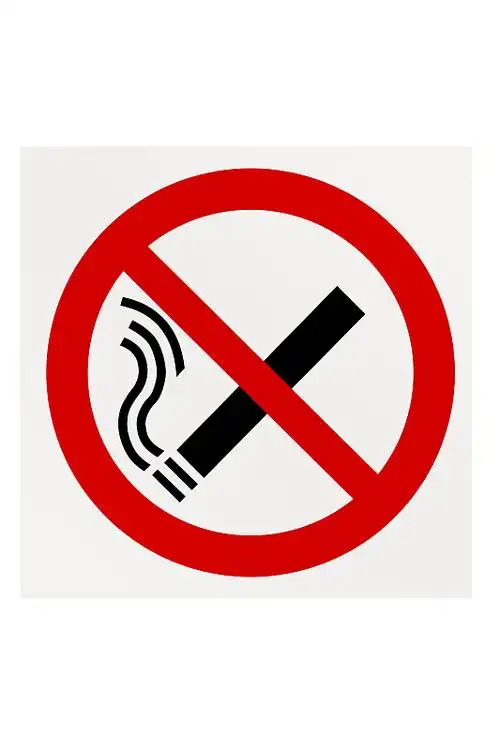The Unseen Risk: How Tobacco Use Undermines Periodontal Regeneration and Accelerates Gingival Recession
You’ve taken a brave and proactive step for your oral health by undergoing periodontal regeneration surgery. Whether it was a bone graft, guided tissue regeneration, or another advanced procedure, this treatment represents a significant investment in restoring the health and stability of your teeth and gums. The goal is clear: to rebuild what periodontal disease has destroyed. In the days and weeks following your surgery, you’re likely meticulously following your dentist's post-operative care instructions, hoping to see that beautiful, healthy gumline return. But there’s a critical factor that could be silently undermining all your efforts, even if you’re doing everything else right: tobacco use.
This article delves into a crucial and often under-discussed connection: how smoking or using other tobacco products after periodontal surgery doesn't just slow healing—it actively promotes the very condition you sought to fix, leading to a high risk of gingival recession. We will explore the biological mechanisms at play, the specific challenges tobacco users face, and what you can do to protect your investment and achieve long-term oral health.
Understanding the Miracle of Regeneration and the Onset of Recession
First, let's appreciate what periodontal regeneration surgery aims to do. Periodontitis is a severe gum infection that damages the soft tissue and destroys the bone that supports your teeth. Regeneration procedures are sophisticated techniques designed not just to clean the infected areas but to actively stimulate your body to regrow bone, cementum (the tooth's root surface), and the periodontal ligament that anchors the tooth in place.
Gingival recession, on the other hand, is the process where the margin of the gum tissue that surrounds the teeth wears away or pulls back, exposing more of the tooth or its root. This can lead to tooth sensitivity, an increased risk of cavities on the roots, and an aesthetically displeasing "long-tooth" appearance. After regeneration surgery, the hope is for the gums to heal tightly and healthily around the teeth. Tobacco use directly sabotages this outcome.
The Triple Threat: How Tobacco Directly Causes Recession After Surgery

Tobacco doesn't cause problems in just one way; it launches a multi-faceted attack on your healing gums.
-
Compromised Blood Flow and Oxygen Deprivation: This is the cornerstone of the problem. Nicotine, a primary component of tobacco, is a potent vasoconstrictor. It causes the tiny blood vessels in your gums to narrow, significantly reducing blood flow to the surgical site. Think of blood as the delivery service for healing. It brings essential oxygen, nutrients, and immune cells to the area to build new tissue and fight infection. When this supply line is constricted, the healing process is starved. The newly forming tissues are deprived of the oxygen they desperately need (a condition known as tissue hypoxia), leading to delayed wound healing and the production of weaker, less resilient gum tissue that is prone to receding.
-
A Weakened Immune Response: Periodontal surgery, like any surgery, is a controlled injury. Your body's immune system is tasked with preventing infection and facilitating repair. Tobacco smoke contains thousands of chemicals that impair the function of key immune cells like neutrophils and fibroblasts. Neutrophils are your first line of defense against bacteria, and fibroblasts are the cells that build new collagen and connective tissue—the very scaffolding of your gums. When these cells are compromised, bacteria lurking in your mouth find it much easier to re-establish an infection. This persistent, low-grade inflammation directly attacks the newly attached gums, breaking down the connective tissue and causing them to detach and recede from the tooth surface. This is a primary mechanism for tobacco-induced gum recession post-surgery.
-
Disruption of Cell Attachment and Collagen Production: For regeneration to be successful, cells like fibroblasts must attach to the root surface and begin producing new collagen fibers that integrate with the regenerated bone. Components in tobacco smoke, such as nicotine and carbon monoxide, interfere with this delicate process. They can reduce the ability of these cells to multiply, migrate to the surgical site, and produce high-quality, sturdy collagen. The result is a weaker periodontal attachment—the seal between the gum and the tooth is less robust and more susceptible to breakdown from even minor inflammatory challenges, paving the way for recession.
Why "Just One Cigarette" After Surgery is a Problem
You might think that having a cigarette or a dip after your procedure is a harmless way to relieve stress. Unfortunately, the reality is quite the opposite. The surgical site is at its most vulnerable in the immediate post-operative period. Introducing the heat, toxins, and vasoconstrictive effects of tobacco at this critical juncture can cause immediate damage. It can disrupt the fragile blood clot that is forming, a condition known as dry socket (alveolar osteitis) in extraction sites, which is intensely painful and delays healing. Furthermore, that single cigarette can instantly reduce blood flow by up to 70% in the gums for a significant period, effectively strangling the nascent regenerative process before it even gets a proper start. This significantly increases the risk of gingival recession after periodontal plastic surgery.
Long-Term Consequences: The Cycle of Destruction
The problems for a tobacco user don't end after the initial healing phase. The long-term implications create a vicious cycle.
- Masking the Symptoms: Tobacco use is notorious for masking the classic signs of gum disease. Nicotine causes vasoconstriction, which reduces blood flow and, consequently, reduces the bleeding and redness that are typically the first warning signs of gingivitis and periodontitis. A tobacco user may look in the mirror and see gums that appear pink and firm, mistakenly believing they are healthy, while underneath, destruction and infection are progressing silently. This delayed diagnosis often means that by the time a problem is noticed, significant damage, including recession, has already occurred.
- Accelerated Attachment Loss: Even with a successful initial regeneration, a tobacco user's gums remain in a chronically compromised state. The reduced blood flow and immune function create an environment where the periodontal attachment is perpetually weaker. This means that the normal, daily challenge from plaque bacteria can cause a much faster and more severe breakdown of the gum-to-tooth attachment compared to a non-user. This is a key reason for accelerated gingival recession in smokers after gum graft or other regenerative therapies.
Beyond Cigarettes: Smokeless Tobacco and Localized Damage
It’s a common misconception that smokeless tobacco (chew, snuff, dip) is a safer alternative for oral health. In many ways, its effects can be more localized and severe. Placing a quid of tobacco directly against the gum in the vestibule of the mouth creates a concentrated assault. The gums are in constant contact with carcinogens and irritants, leading to a condition called nicotine stomatitis or specifically smokeless tobacco keratosis. This often manifests as white, leathery patches on the gum. More critically, it causes direct irritation and inflammation, leading to dramatic and localized gingival recession exactly at the site where the tobacco is placed. If you've had surgery in an area where you typically use smokeless tobacco, you are virtually guaranteeing the failure of the procedure and severe recession in that spot.
Your Path to Success: A Smoke-Free Healing Journey
The evidence is overwhelming and unambiguous. The single most impactful thing you can do to ensure the success of your periodontal regeneration surgery and prevent gingival recession is to quit using tobacco. Here’s how you can approach it:
- Timing is Everything: The ideal time to quit is before your surgery. This gives your body a head start in improving its circulation and immune response. However, it is never too late. Quitting on the day of your surgery, or at any point during your recovery, will still provide immense benefits.
- Seek Professional Help: Quitting tobacco is a challenge, and you don't have to do it alone. Talk to your periodontist and your physician. They can provide resources, support, and potentially recommend FDA-approved medications like nicotine replacement therapy (gum, patches, lozenges) or prescription drugs like bupropion or varenicline. Using cessation aids is far better for your surgical outcome than continuing to smoke.
- Embrace Meticulous Oral Hygiene: With a reduced immune response, your margin for error with oral hygiene is much smaller. You must be diligent about gentle but effective brushing, flossing, and using any prescribed antimicrobial rinses like chlorhexidine to keep bacterial levels as low as possible.
- Commit to Your Follow-Up Appointments: Your periodontist will need to monitor your healing very closely. They will check the stability of the gum levels, probe the pockets to assess reattachment, and may take follow-up X-rays to monitor bone fill. Be honest with them about your tobacco use; they are there to help you succeed, not to judge.
Your decision to undergo periodontal regeneration surgery was a powerful commitment to saving your teeth and restoring your smile. Don't let tobacco undo that commitment. By understanding the direct link between tobacco and the failure of gum regeneration leading to recession, you are equipped with the knowledge to make the best choice for your health. A smoke-free future is not just a gift to your lungs and heart; it is the ultimate assurance that your investment in a healthy, beautiful smile will stand the test of time. Take that step, seek support, and give your gums the fighting chance they deserve to heal, regenerate, and remain firmly and healthily in place for years to come.










